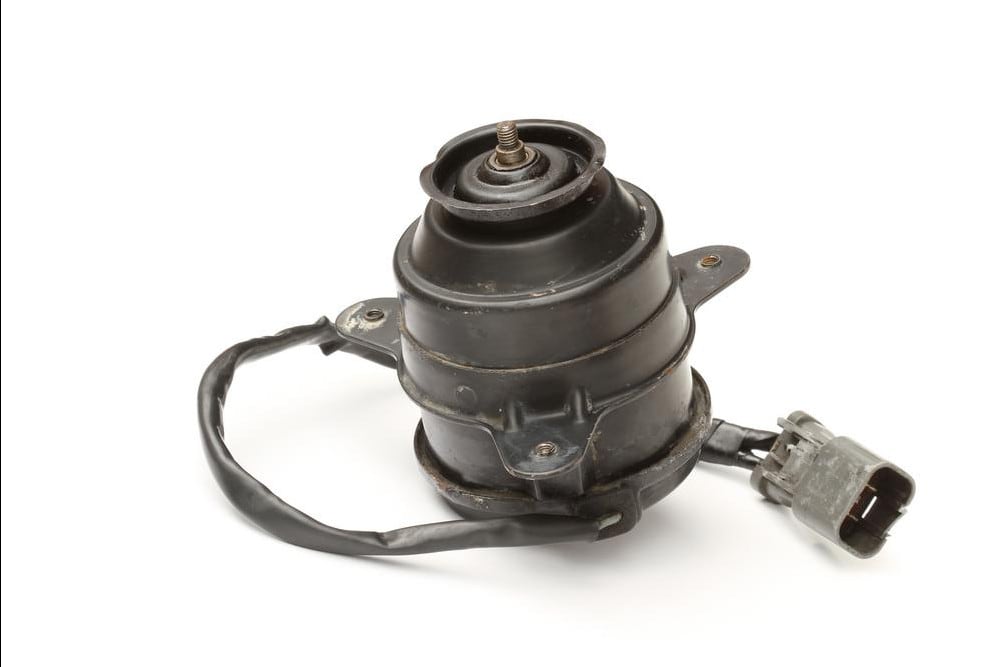

Virtually all late model vehicles and the vast majority of road going vehicles use radiator cooling fans with electric motors to keep the engine cool. The cooling fans are mounted on the radiator and work to pull air through the radiator fans to keep the engine cool, especially during idle and low speeds, where air flow through the radiator is significantly less than at road speeds. As the engine operates the coolant temperature will continue to rise, and if there is no air moving through the radiator to cool it, it will begin to overheat. It is the job of the cooling fans to provide that air flow, and they do so using electric motors.
The electric motors found on many cooling fans are not much different than regular industrial use electric motors, and are often a serviceable or replaceable component of the cooling fan assembly. As they are the component that rotates the fan blades and creates the air flow, any issues that eventually arise with the fan motors can quickly develop into other problems. Usually a bad or failing cooling fan motor will display a few symptoms that can alert the driver of a potential problem that should be serviced.
1. Cooling fans do not come on
The most common symptom of a faulty cooling fan motor are cooling fans that do not come on. If the cooling fan motors burn out or fail, the cooling fans will be disabled. The cooling fan motors work together with the cooling fan blades to pull air through the radiator. If the motor fails the blades will not be able to spin or generate air flow.
2. Vehicle overheating
Another symptom of a possible problem with the cooling or radiator fan motors is the vehicle overheating. The cooling fans are thermostatic and are designed to come on once a certain temperature is reached, or certain conditions are met. If the cooling fan motors fail, and disable the fans, the engine temperature will continue to climb until the engine overheats. Engine overheating, however, can also be caused by a wide variety of other problems, so having the vehicle properly diagnosed is highly recommended.
3. Blown fuse
A blown cooling fan circuit fuse is another symptom of a potential problem with the cooling fan motors. If the motors fail or surge, they may cause the fuse to blow in order to protect the rest of the system from any sort of damage due to electrical surges. The fuse will have to be replaced to restore possible functionality to the fans.
The cooling fan motors are an important component to any cooling fan assembly, and play a key role in keeping the car at safe temperatures during idle and low speeds. For this reason, if you suspect that your cooling fan motors may be having an issue, have the vehicle inspected by a professional technician, such as one from YourMechanic. They will be able to look over your vehicle and replace your cooling fan motor.



